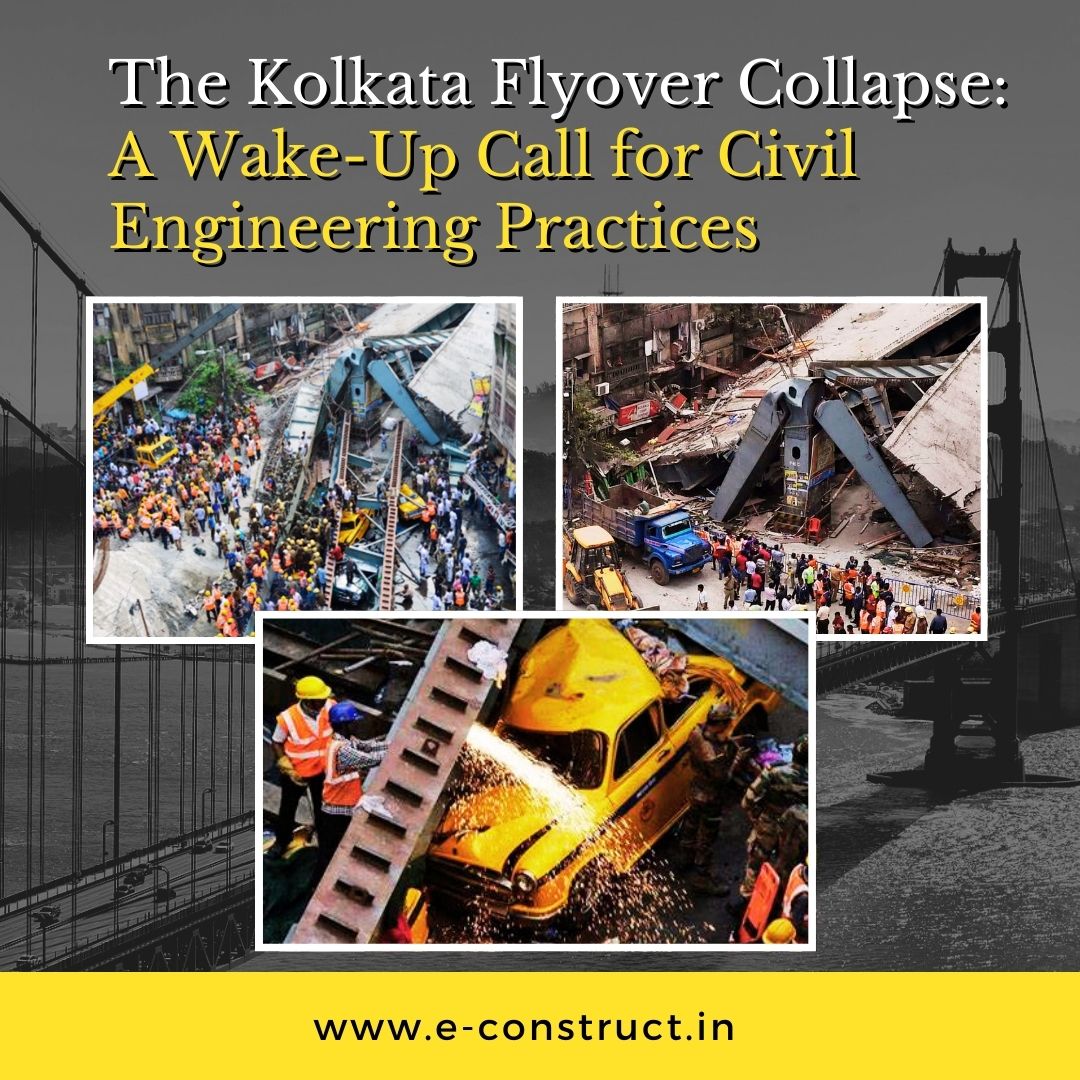The Kolkata Flyover Collapse – Analyzing Engineering Failures and Lessons for Future Infrastructure Projects

The tragic collapse of the Kolkata flyover in 2016 highlights critical flaws in civil engineering design and execution. Learn about the structural failures, the IIT Kharagpur report, and the vital lessons for the future of infrastructure safety and accountability.
IIT Reports Highlight Flaws in Design and Execution
The IIT Kharagpur report identified the stretch between Ganesh Talkies and Girish Park as unsafe due to “poor design, materials, and workmanship”, questioning the accuracy of the state’s traffic survey that justified the Rs 168-crore flyover project. Intended to ease traffic between Burrabazar and Howrah, the project faced significant challenges and cost overruns, leading to its eventual collapse. Despite the report, the West Bengal committee, led by Chief Secretary Moloy De, failed to decide on dismantling or rebuilding the flyover in February. Some members suggested seeking a second opinion, while others debated the feasibility and cost-effectiveness of restoring or dismantling the structure.
The Design and Structural Failures
The collapse of the Kolkata flyover can be attributed to several critical engineering flaws:
- Post-construction modifications, such as adding extra floors or changing building usage without structural assessments, often overload the structure. Continuous water seepage, poor drainage, and lack of maintenance weaken concrete and corrode reinforcement steel over time. Aging infrastructure, improper construction techniques, and environmental factors like soil erosion further contribute to structural instability.
1. Design Flaws in the Cantilever Girders: One of the main structural issues was the design of the cantilever girders, which were not adequately connected to the vertical face of Pier 40(C). The girders, which were meant to support the flyover, were only supported by the top plate, with insufficient bolting and welding. This lack of secure connections caused one cantilever girder to fail, followed by the second.
2. Inadequate Cantilever Design for Live Loads: The cantilever girders were designed only to bear the dead load of concrete, but they were not designed to support dynamic loads from moving vehicles. The failure to account for the additional load from traffic was a key factor in the collapse.
3. Weak Foundation and Support Structure: The foundation at Pier 40(C) was particularly weak. Unlike other sections of the flyover that had two supporting piers, this section relied on a single column. This imbalance led to a structural failure when the cantilever girders collapsed.
4. Poor Connection Details and Insufficient Bolting: Critical points of the structure were joined using bolts that were too weak for the stresses they would face. For example, 16mm bolts were used at key joints, which were not strong enough to withstand the shear forces involved in the cantilevered sections.
Key Lessons from the Collapse
1. Structural integrity cannot be compromised, especially for critical components like beams and girders. Bolting, welding, and reinforcement should be rigorous and meet the highest standards.
2. Comprehensive Load Testing and Structural Analysis must be conducted and should be coupled with independent verification of the design
3. It’s essential to conduct manual checks and validate design calculations through practical methods to ensure the accuracy of the design rather than solely relying on computer-generated designs.
4. The collapse also underscores the need for strong safety protocols during construction. Adequate safety measures, such as barricades and warning signs, are essential to protect workers and the public from harm.
Conclusion:
A Call for Change in Civil Engineering Practices
The Kolkata flyover collapse serves as a tragic reminder of the consequences of neglecting proper engineering practices, urging the civil engineering community to prioritize design integrity, safety, and accountability. It highlights the need for rigorous design, thorough testing, and continuous education to prevent future infrastructure failures. As civil engineers, we must ensure our structures are not only functional but also safe and sustainable. Let’s commit to upholding the highest standards of safety and integrity in every project to avoid repeating past mistakes.


